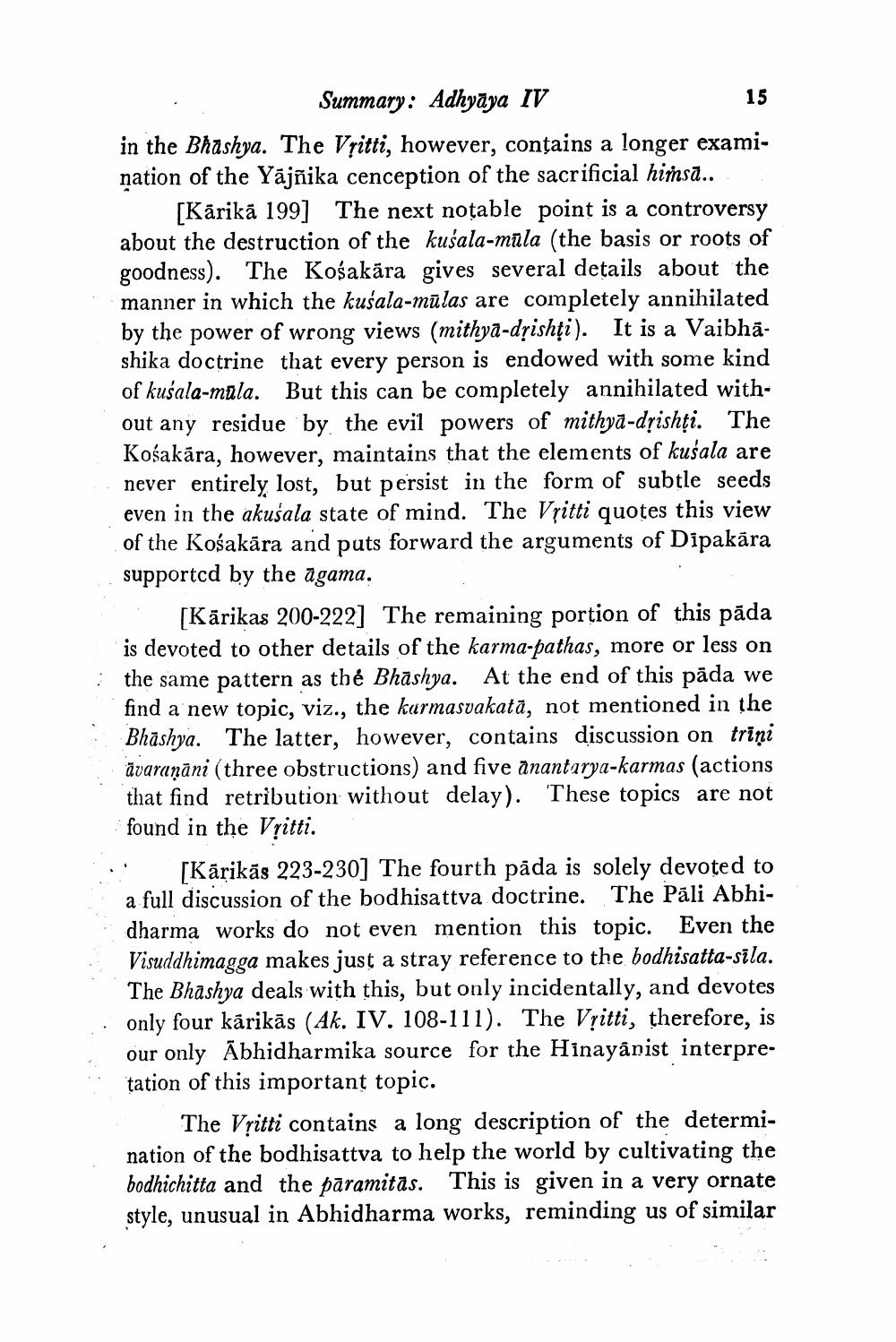________________ 15 Summary: Adhyaya IV in the Bhashya. The Vritti, however, contains a longer examination of the Yajnika cenception of the sacrificial himsa.. [Karika 199] The next notable point is a controversy about the destruction of the kusala-mula (the basis or roots of goodness). The Kosakara gives several details about the manner in which the kusala-mulas are completely annihilated by the power of wrong views (mithya-dsishti). It is a Vaibhashika doctrine that every person is endowed with some kind of kusala-mala. But this can be completely annihilated without any residue by the evil powers of mithya-dsishti. The Kosakara, however, maintains that the elements of kusala are never entirely lost, but persist in the form of subtle seeds even in the akusala state of mind. The Vritti quotes this view of the Kosakara and puts forward the arguments of Dipakara supportcd by the agama. [Karikas 200-222] The remaining portion of this pada is devoted to other details of the karma-pathas, more or less on ; the same pattern as the Bhashya. At the end of this pada we find a new topic, viz., the karmasvakata, not mentioned in the Bhashya. The latter, however, contains discussion on trini avaranani (three obstructions) and five anantarya-karmas (actions that find retribution without delay). These topics are not found in the VIitti. : Karikas 223-230] The fourth pada is solely devoted to a full discussion of the bodhisattva doctrine. The Pali Abhidharma works do not even mention this topic. Even the Visuddhimagga makes just a stray reference to the bodhisatta-sila. The Bhashya deals with this, but only incidentally, and devotes only four karikas (Ak. IV. 108-111). The Vritti, therefore, is our only Abhidharmika source for the Hinayanist interpretation of this important topic. The Vritti contains a long description of the determination of the bodhisattva to help the world by cultivating the bodhichitta and the paramitas. This is given in a very ornate style, unusual in Abhidharma works, reminding us of similar




